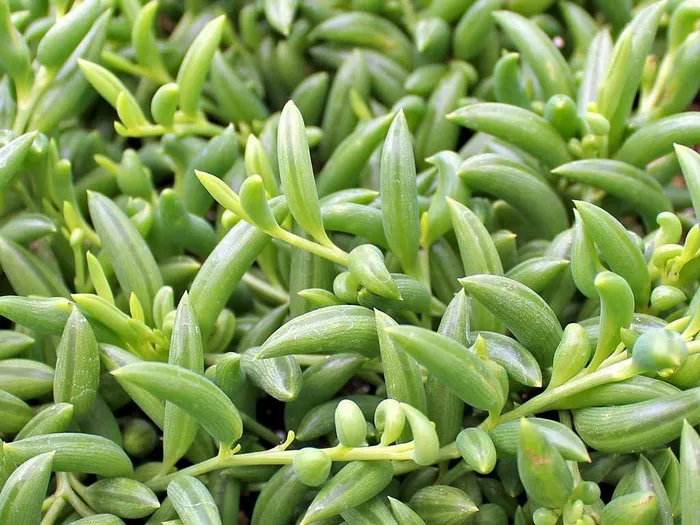57
Succulents are beloved for their unique shapes, colors, and low-maintenance nature. Propagating succulent leaves is a wonderful way to expand your collection or share these charming plants with friends. In this comprehensive guide, we’ll walk you through the process of propagating succulent leaves step by step.
Understanding Succulent Leaf Propagation
Before we begin, it’s important to understand the basics of succulent leaf propagation. Succulents are plants that store water in their leaves, stems, or roots. This adaptation allows them to survive in arid environments. When a succulent leaf is removed from the parent plant and placed in the right conditions, it can develop roots and eventually grow into a new plant.
Choosing the Right Succulent Leaf
Not all succulent leaves are suitable for propagation. Here are some tips on choosing the right leaf:
- Select a healthy leaf: Look for a leaf that is plump, firm, and free from damage or disease. Avoid leaves that are yellowing, shriveled, or have spots.
- Choose a mature leaf: Mature leaves are more likely to successfully propagate than young or immature leaves. Look for leaves that are fully developed and have a good color.
- Detach the leaf carefully: When removing a leaf from the parent plant, be gentle to avoid damaging it. Use a clean, sharp knife or scissors to cut the leaf at the base, or gently twist it off.
Preparing for Propagation
Once you have selected a suitable leaf, it’s time to prepare for propagation. Here are the steps to follow:
- Let the leaf dry: After detaching the leaf, let it sit in a dry, shaded area for a few days to allow the cut end to callus over. This helps prevent rot and promotes successful root growth.
- Gather materials: You will need a clean container, well-draining potting mix, and a spray bottle filled with water.
- Prepare the container: Choose a container that is shallow and has drainage holes. Fill it with well-draining potting mix, leaving a small space at the top.
See also:Succulent Propagation: A Guide to Taking and Rooting Cuttings
Advertisements
Advertisements
Advertisements
Propagating the Succulent Leaf
Now that you are prepared, it’s time to propagate the succulent leaf. Follow these steps:
- Place the leaf on the potting mix: Gently place the callused leaf on the surface of the potting mix. Make sure the cut end is in contact with the soil.
- Do not bury the leaf: Avoid burying the leaf in the soil. The leaf should be placed on top of the soil and left exposed to the air.
- Mist the leaf and soil: Use the spray bottle to mist the leaf and the soil lightly. Keep the soil moist but not wet.
- Find a suitable location: Place the container in a bright, indirect light location. Avoid direct sunlight, as it can scorch the leaf. A windowsill with filtered light or a shaded outdoor area is ideal.
Caring for the Propagated Leaf
As the succulent leaf begins to grow roots and a new plant, it will need proper care. Here are some tips for caring for the propagated leaf:
- Keep the soil moist: Mist the leaf and soil regularly to keep the soil moist. Avoid overwatering, as this can cause rot.
- Provide adequate light: As the new plant grows, gradually increase its exposure to light. Succulents need bright, indirect light to thrive.
- Be patient: Propagation takes time. It can take several weeks or even months for the leaf to develop roots and a new plant. Be patient and don’t be tempted to disturb the leaf too often.
- Transplant when ready: Once the new plant has grown a few leaves and a good root system, it can be transplanted into a larger pot. Use well-draining potting mix and handle the plant carefully to avoid damaging the roots.
Troubleshooting
During the propagation process, you may encounter some issues. Here are some common problems and solutions:
- Rotting leaf: If the leaf starts to rot, it may be due to overwatering or poor drainage. Remove the rotting leaf and adjust your watering and drainage practices.
- No root growth: If the leaf is not developing roots, it may be due to insufficient light, improper temperature, or a problem with the soil. Check the growing conditions and make adjustments as needed.
- Slow growth: Some succulent leaves may take longer to propagate than others. If you are experiencing slow growth, be patient and continue to provide proper care.
Conclusion
Propagating succulent leaves is a fun and rewarding way to expand your collection of these beautiful plants. By following the steps outlined in this guide, you can successfully propagate succulent leaves and watch as new plants grow. Remember to be patient, provide proper care, and enjoy the process of creating new succulent plants.
You Might Be Interested In
Advertisements


